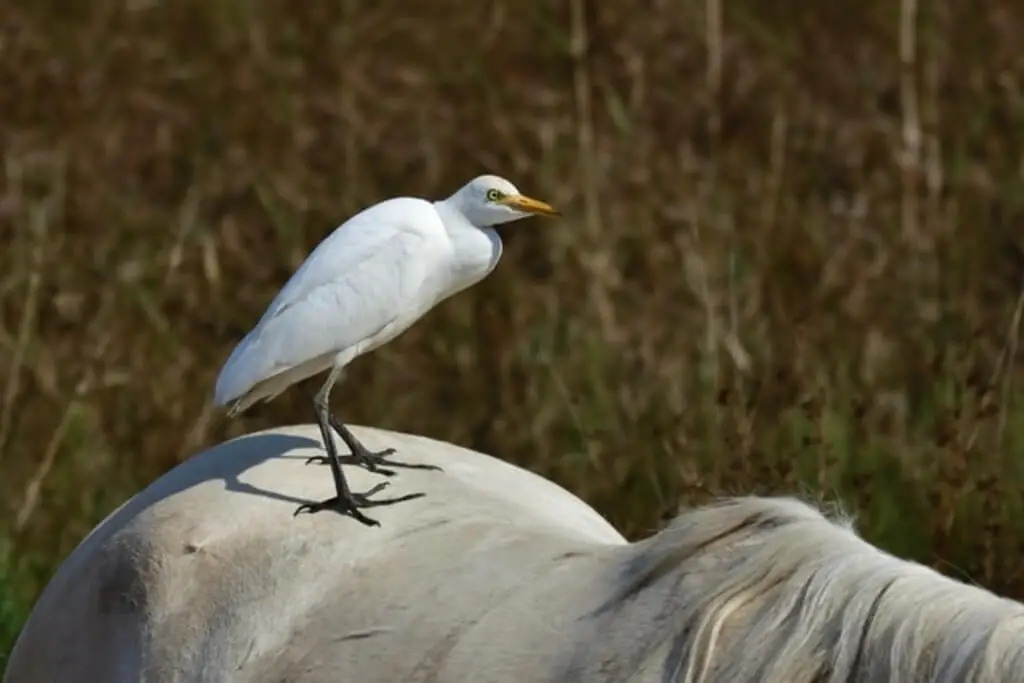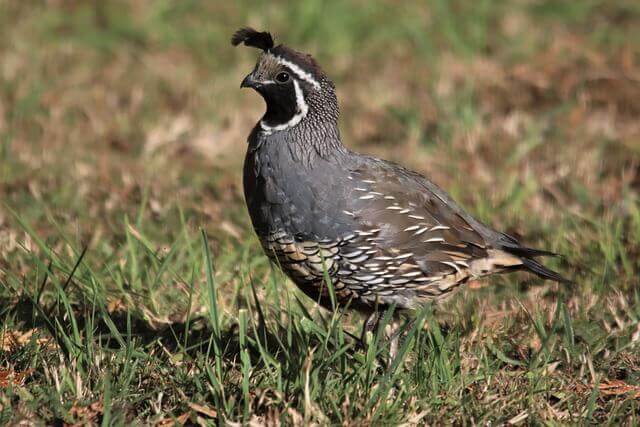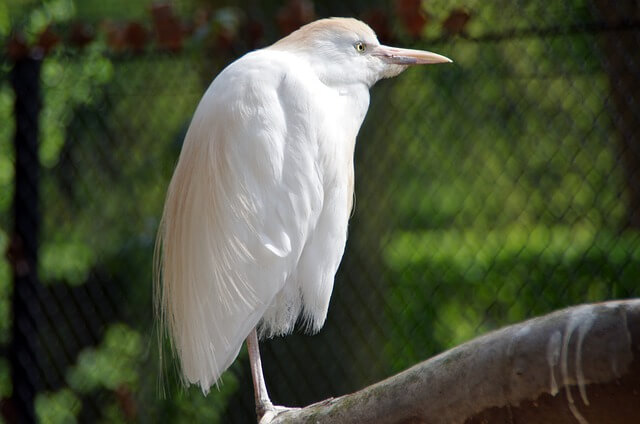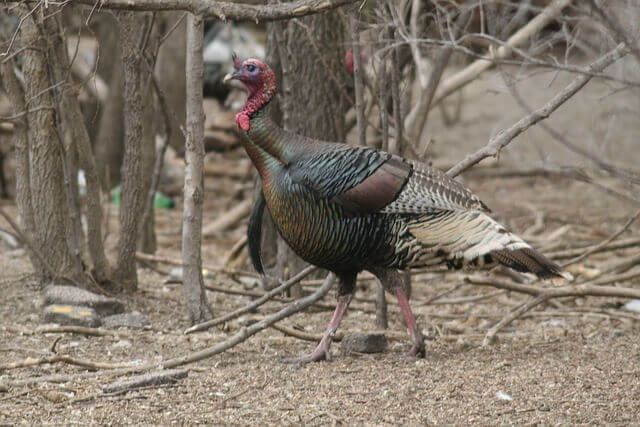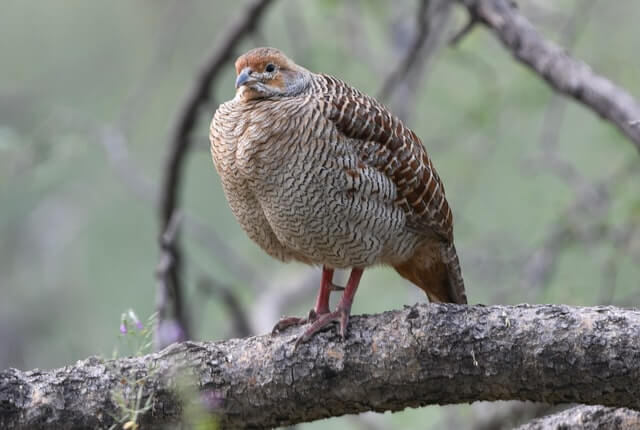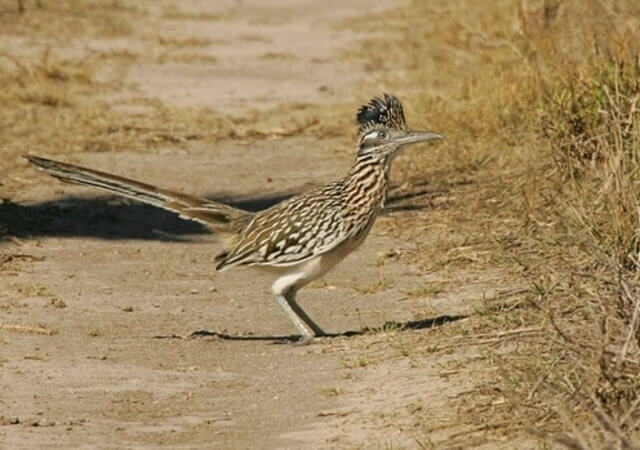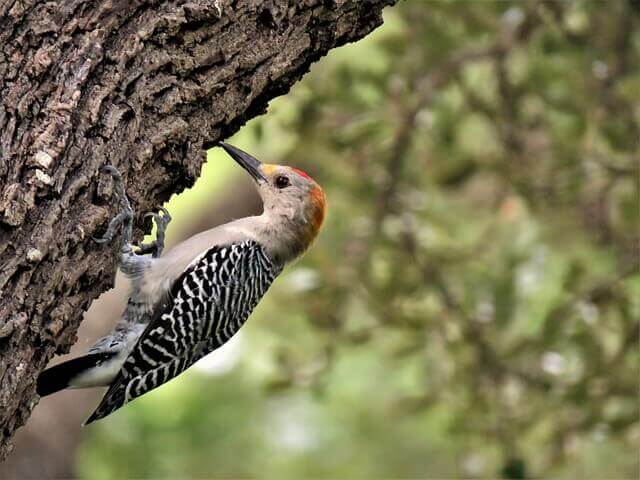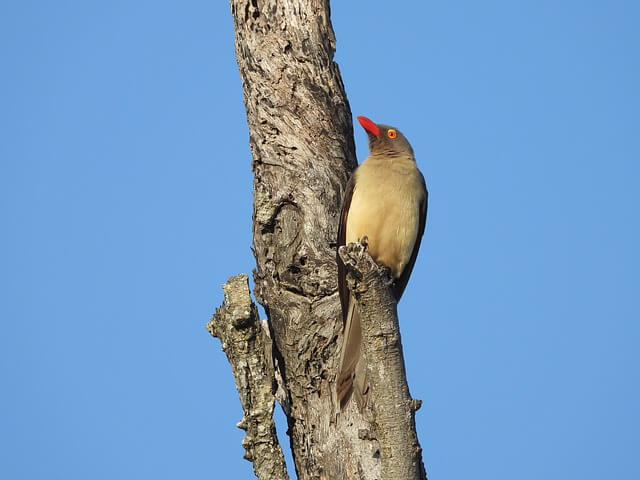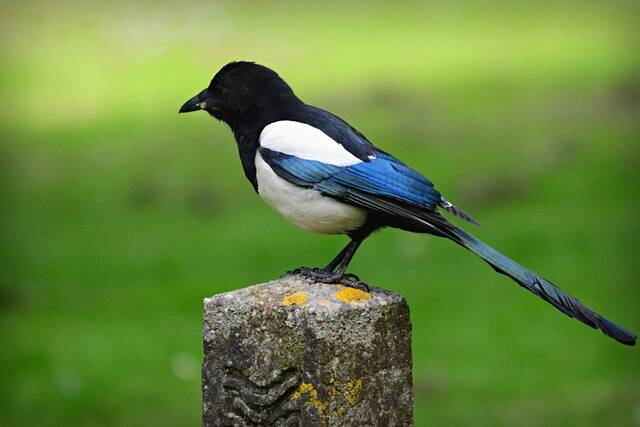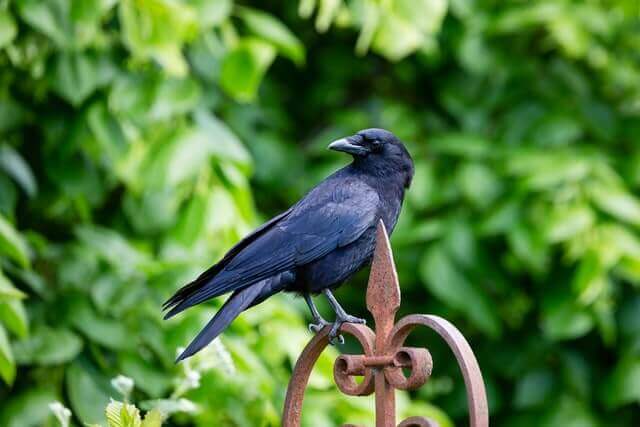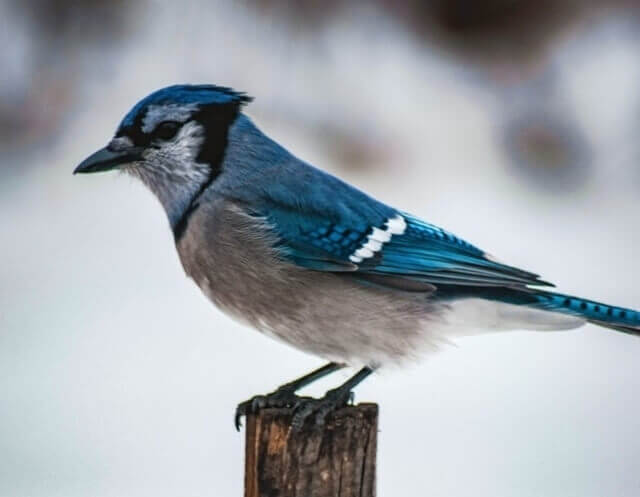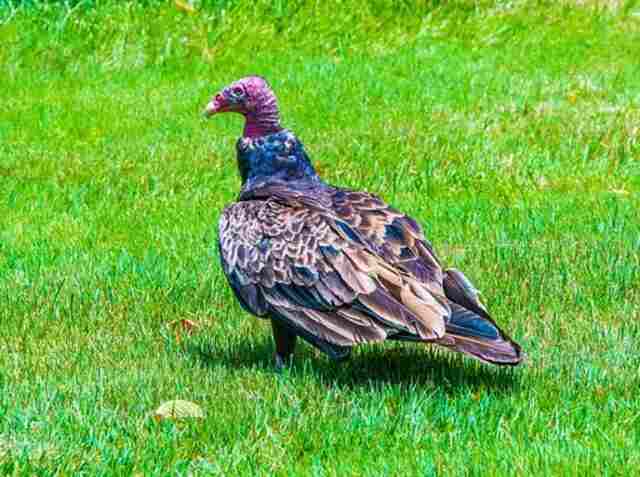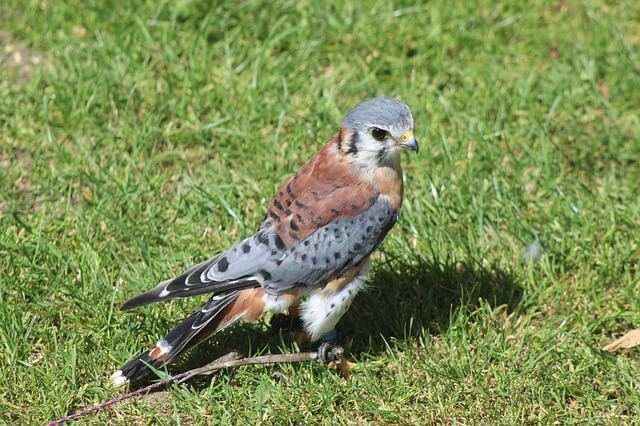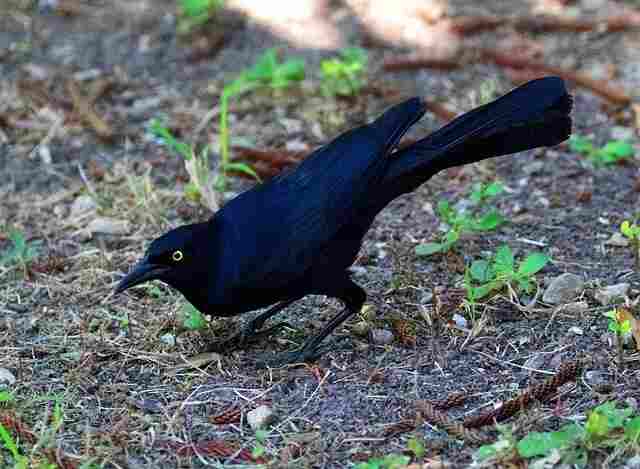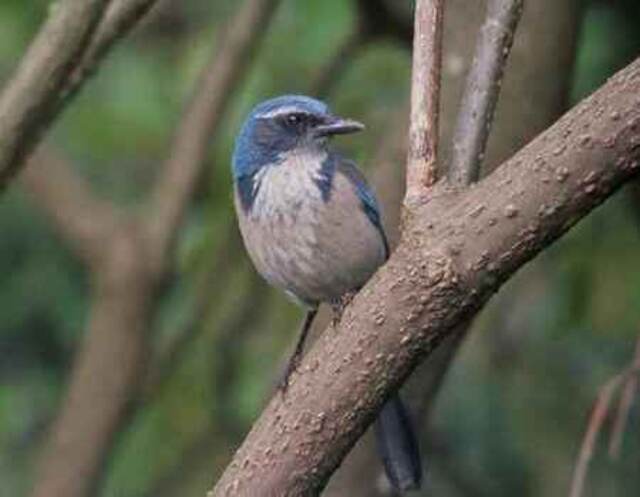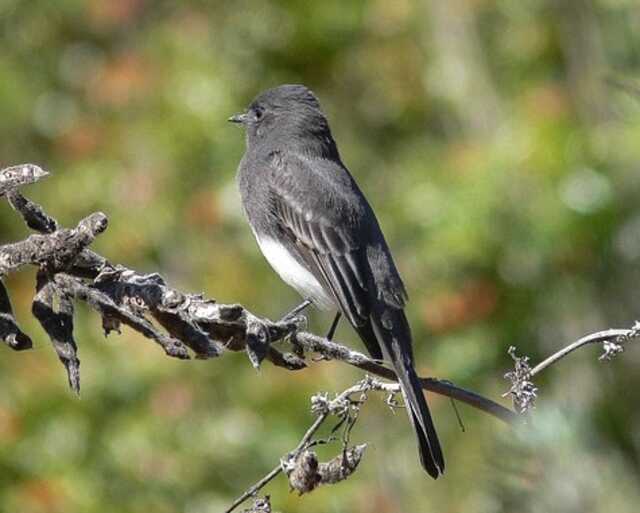Ticks can be a serious problem for both humans and animals, carrying a range of diseases that can cause everything from mild discomfort to long-term health issues. While there are plenty of chemical tick control methods available, many people are turning to natural pest control options instead.
One such option is using birds to control tick populations, as some bird species are known to have a taste for ticks. In this article, we’ll introduce you to 20 different bird species that are great at eating ticks and can help you keep your yard and garden tick-free without resorting to harmful chemicals. So let’s dive in and explore nature’s natural pest control!
Table of Contents
- 1 Birds That Eat Ticks
- 1.1 Quails
- 1.2 Cattle Egret
- 1.3 Chickens
- 1.4 Guinea Fowl
- 1.5 Ducks
- 1.6 Wild Turkeys
- 1.7 Partridge
- 1.8 Roadrunners
- 1.9 Woodpeckers
- 1.10 Red-billed Oxpecker
- 1.11 Magpies
- 1.12 Crows
- 1.13 Blue Jays
- 1.14 Turkey Vultures
- 1.15 American Kestrels
- 1.16 Great-tailed Grackles
- 1.17 Northern Mockingbirds
- 1.18 Western Scrub-jays
- 1.19 Black Phoebes
- 1.20 American Robins
- 2 The Dangers of Ticks
- 3 The Benefits of Birds that Eat Ticks
- 4 Attracting Birds to Your Yard
- 5 Frequently Asked Questions
- 6 Conclusion
- 7 Author
Birds That Eat Ticks
Quails
Quails are small, flightless birds that make up the order Galliformes. Quails will feed on plants and insects. Some people have found that ticks will follow them if they are in an area with lots of vegetation or tall grass. So, what does this have to do with Quails?
Quails are one of the few birds that can eat ticks because they hunt for bugs in tall vegetation and need to stick their head through a lot of leaves or grass. The Quail is unique in its ability to consume these blood-sucking pests at an incredible rate.
Read more: How to Attract Quail to your yard?
Cattle Egret
The Cattle Egret is a bird that can be found in open grasslands and cattle pastures in many regions of the world, including Europe and North America. Cattle egrets have been known to feed on ticks, but not just any type of tick will do for the cattle egret’s diet.
They typically feed off the Lone Star Tick, which is most commonly found in the southeastern United States and can be transmitted with a bite from an infected host. Cattle Egrets actually pick the ticks off of the cows, thus removing them from the animals and stopping their spread.
Read more: 52 Fun Facts About Cattle Egrets (with Photos, ID & Info)
Chickens
Farmers across the United States are finding that their chickens can help control the population of ticks. The blood-sucking insects pose a problem for farmers because they carry diseases and other pests that can harm animals and humans. Insecticides have proven to be less effective in controlling ticks, so some producers are turning to their chicken populations as an alternative method.
Chickens not only eat ticks but also produce eggs, meat, and fertilizer while providing free pest control services. Chickens have been shown to be able to eat up to 60% of ticks that try to feed on them or a chicken flock per day.
Read more: Can Chickens Fly? (The Science Behind Chicken Flight!)
Guinea Fowl
The Guineas, or Guinea Fowls, are a breed of bird that have been used for centuries to help keep down the population of ticks. Guinea Fowl love to eat ticks, and they will gobble up an astonishing amount of them during their lifetime – as many as 5400 ticks per year! This makes them one of the most effective methods for controlling tick populations and protecting livestock from being infested with these parasites.
The way they do this is by walking through grasses and fields in search of their next meal. Once they find a host, they’ll usually pick it up and swallow it whole. They will also eat lizards, insects, seeds and berries.
Ducks
Ducks are known for their webbed feet and feathers, but they’re also a natural solution to the tick problem. As a predator of these pests, ducks can control populations by eating them. They often pick up ticks while walking in tall grasses and bushes that may harbor these parasites.
Ticks feed on blood from mammals, including humans and pets, which can lead to infection with Lyme disease or other diseases carried by ticks. Ducks act as nature’s pest control by consuming both ticks and their hosts. Ducks consume about a thousand ticks each day, and their diet can help reduce tick populations by about 50%.
Read more: 23 Interesting Fun Facts About Ducks
Wild Turkeys
Turkeys are large birds that often find themselves near fields, gardens, and other outdoor areas. As a result of this proximity to ticks, they eat the blood-sucking insects with some frequency.
While many people see turkeys as pests because they can gobble up vegetables from gardens if given the chance, it is also true that these birds are providing an important service by eating ticks. It is estimated that a single wild turkey can consume up to 100,000 ticks in its lifetime.
Read more: 6 Birds That Look Like Turkeys (Photos, ID & Stats)
Partridge
Partridges are small, plump ground-dwelling gamebirds can be found throughout the United States and are most often seen near water sources or in moist meadows. These birds typically eat ticks and other insects that would otherwise infest the animals in the area.
They do this by having thick bristles on their tongues, which can be used as a brush-like tool for catching insects. This allows to allow them to catch all types of ticks in any type of environment; even under leaves or in tall grasses. These birds have an amazing ability to keep the population of ticks down while still getting their meal!
Roadrunners
The Roadrunner is a bird of the cuckoo family. These birds are native to North America and Mexico. Roadrunners may occasionally consume ticks, but not enough to eradicate them from their environment.
Roadrunners will eat ticks because they have evolved over time with this behavior as a natural response for when they pick up a tick on their feathers or skin while out in the wild hunting food sources such as lizards, mice, insects, snakes and other animals that carry these pesky parasites.
Read more: 35 Fun Facts About Roadrunners (with Photos & Details)
Woodpeckers
It is no secret that Woodpeckers love to peck at things. What may not be as well known, however, is the fact that woodpeckers also have a natural and strong affinity for eating ticks. This is because woodpeckers are capable of using their long, sticky tongues and feet to capture ticks as they climb up a tree trunk or onto branches.
It has also been found that woodpeckers will sometimes use their sharp beaks to puncture the tick’s body before consuming it. Woodpecker populations around the world may play an important role in controlling Lyme disease.
Read more:
- How to Attract Downy Woodpeckers: Expert Tips!
- How to Attract Pileated Woodpeckers to your Yard?
- Interesting Red-Headed Woodpecker Facts (Explained)
Red-billed Oxpecker
The Red-billed Oxpecker is one of the few animals that are known to feed on ticks. These birds can be found in Africa, Asia and Australia. Oxpeckers eat ticks and lice off of larger animals like giraffes, zebras, buffalo and rhinos. These birds remove pests from an animal’s skin and coat by pecking at it with their sharp beaks while they perch on its back.
They may also eat other parasites, such as lice or fleas, from an animal’s skin to help them keep healthy. These birds are mostly found living around woodlands or grasslands.
Magpies
Magpies are one of the few birds that actually eat ticks, which can be beneficial for both humans and animals. Ticks are known to feed off of blood from both people and animals, making them a nuisance and possible carriers of disease.
Magpies have a unique diet that includes many invertebrates and small mammals, including ticks. In some cases, it’s been found that magpies may take up to 40% of their daily food intake from ticks! This is an incredible feat and makes them an important part of the ecosystem when it comes to pest control.
Read more: How to Attract Magpies to your Garden? (In 4 Easy Steps!)
Crows
Crows are a common bird around the world, and they have an important purpose in our ecosystems. One of their roles is to help control tick populations by eating them. Crows do indeed eat ticks, which can be helpful in keeping these pesky pests at bay. Not only do crows eat the adult ticks, but they also pick off larvae and eggs that are stuck on tall grasses or shrubs.
This helps reduce the number of ticks that hatch into adulthood, as well as reducing the disease-carrying capacity of those that survive. While crows may not completely eradicate tick populations, their contribution can certainly make a difference!
Read more: How To Attract Crows To Your Backyard: Expert Tips!
Blue Jays
Blue Jays are a type of songbird that is native to most areas of North America. They have striking blue and white feathers, making them easily identifiable. While Blue Jays typically eat insects, fruit, and nuts, they can also benefit us by eating ticks. Yes, you read right – Blue Jays will eat ticks!
This helps control the tick population in your yard and keeps the birds healthy by preventing them from being exposed to the diseases ticks may carry. So while they may not be everyone’s favorite bird due to their loud chirps, it’s important to recognize how valuable Blue Jays can be as part of our ecosystem.
Read more: What Attracts Blue Jays to your Yard?(Expert Tips)
Turkey Vultures
Turkey Vultures are a species of large birds found in North America. They feed primarily on carrion and have been known to eat small insects, including ticks. This is beneficial as ticks can carry disease and cause harm to humans and animals alike.
Turkey Vultures have strong feet with sharp talons that make it easy for them to capture their prey, including ticks. They also possess keen vision that helps them spot potential food sources from high up in the sky. Thus, these birds help reduce tick populations by feeding on them, contributing to healthier environments for us all.
American Kestrels
American Kestrels are small, aerial predatory birds in the falcon family. While they feed on a variety of prey – such as insects, lizards, snakes, and rodents – they have also been known to eat ticks. These birds can be spotted in grasslands and open woods throughout North America and parts of Europe.
In addition to eating ticks, American Kestrels play an important role in controlling the population of many other pests. From keeping the tick population under control to helping maintain the ecological balance of their habitats, this bird does it all!
Read more: 27 American Kestrel Fun Facts (with Photos, ID & Info)
Great-tailed Grackles
Great-tailed Grackles are large and elegant birds native to the Americas. They have a glossy black body with bright yellow eyes, and their long tail feathers often fan out behind them like a cape when they’re in flight. These grackles also eat ticks!
Research has shown that Great-tailed Grackles actively seek out and consume adult ticks from animals to help prevent the spread of disease. Not only are these grackles helping keep other creatures safe, but in some areas they can be seen alongside livestock, providing farmers with a natural form of pest control.
Northern Mockingbirds
Northern Mockingbirds are a species of birds found in North America. These medium-sized birds have gray feathers and white patches on their wings and tails, which makes them easy to recognize. They primarily eat insects and fruits, but we now know that they also feed on ticks.
Studies show that Northern Mockingbirds can significantly reduce the number of ticks in an area, providing an important service to people living in the region by controlling tick populations. This helps protect against diseases like Lyme Disease, which is spread through tick bites.
Read more: How to Attract Mockingbirds to your Yard? (Expert Tips)
Western Scrub-jays
Western Scrub-Jays are native to western North America, and they have been known to eat ticks as part of their diet. This behavior is not usually seen in the wild, but it has been observed in areas where jays have been accustomed to human presence and are more likely to take advantage of food sources that people provide, such as bird feeders.
Even though Western Scrub-Jays don’t actively seek out tick meals, they do occasionally eat them when given the opportunity. They also serve another purpose in controlling tick populations by redistributing them across a wider area than what would otherwise be possible with a single host animal.
Black Phoebes
Black phoebes are small songbirds native to the western United States. They are often seen perched on fences, poles or other open perches in search of food. One of their favorite meals? Ticks! Black phoebes eat a variety of insect prey, but ticks make up a large portion of their diet.
Not only do they actively search for ticks among leaves and grass blades, they also hunt them while hovering in midair. In addition to providing pest control services, these little birds create an enchanting sight with their distinctive flitting flight pattern and melodic calls.
American Robins
American Robins are a common species of bird found throughout North America. They have reddish-orange breasts, gray backs and wings, and black heads. Not only are they beautiful to look at, but they are also incredibly helpful in the battle against ticks!
American Robins eat many types of insects, including ticks! By reducing the number of ticks in our environment, these birds can help protect humans from diseases like Lyme disease that ticks can carry. The next time you see an American Robin, take a moment to appreciate its beauty and its service as a natural tick combatant!
Read more: How To Attract Robins To Your Yard? A Step-By-Step Guide!
The Dangers of Ticks
While ticks may be small, they can pose a serious threat to both humans and animals. These tiny pests are known for carrying a range of illnesses, including Lyme disease and Rocky Mountain spotted fever.
Lyme disease in particular can cause a range of symptoms, including fever, fatigue, joint pain, and even neurological problems in some cases. It can be a serious and debilitating condition, and the risk of infection is not to be taken lightly.
Ticks can also have a significant impact on pets and other animals. Dogs and cats are particularly susceptible to tick bites, which can lead to skin irritation, infection, and even anemia if left untreated. In more severe cases, tick bites can lead to paralysis or even death.
Livestock and other animals can also be at risk from tick-borne illnesses, making tick control an important consideration for farmers and other animal caretakers. Preventing tick bites and controlling tick populations is key to avoiding the potential dangers of ticks.
This can be accomplished through a range of methods, from wearing protective clothing and using tick repellents to using natural pest control methods like birds that eat ticks.
With the right precautions, it’s possible to keep yourself and your animals safe from tick-borne illnesses and enjoy the great outdoors without fear of ticks.
The Benefits of Birds that Eat Ticks
While there are many different methods for controlling tick populations, using birds that eat ticks can be an effective and natural solution. These birds are a valuable ally in the fight against ticks, as they feed on a variety of insects and other pests that can be harmful to humans and animals. One of the biggest benefits of birds that eat ticks is that they are a natural predator of these pests.
Ticks are a common source of food for many bird species, including chickens, guinea fowl, and wild turkeys. By introducing these birds to your yard or garden, you can create a natural barrier against ticks and other harmful insects, reducing the need for chemical pesticides and other harmful methods.
Another benefit of using birds that eat ticks is that they can be a cost-effective solution. While many other pest control methods can be expensive and time-consuming, using birds to control ticks is a relatively low-maintenance and affordable option.
By providing a suitable habitat and food source, you can attract a range of bird species to your property and enjoy the benefits of natural pest control without breaking the bank. Finally, using birds that eat ticks is also a more eco-friendly solution than many other pest control methods.
Many chemical pesticides and other treatments can have negative effects on the environment, harming other wildlife and disrupting natural ecosystems. By using birds to control ticks, you can reduce the environmental impact of pest control and enjoy a safer and more sustainable solution to pest problems.
Attracting Birds to Your Yard
If you’re interested in using birds that eat ticks as a natural pest control solution, the first step is to create a suitable habitat for these birds in your yard. Here are some tips for attracting birds to your property:
- Provide a variety of food sources: Different bird species have different preferences when it comes to food, so it’s important to provide a variety of options. In addition to ticks, many birds also feed on insects, seeds, and fruits. Consider planting a mix of native plants, providing bird feeders, and leaving some areas of your yard unmanicured to create a diverse food supply.
- Create a suitable habitat: Birds need a safe and comfortable habitat to thrive. Providing areas of dense vegetation, nesting boxes, and water sources can help create an inviting environment for birds. Additionally, minimizing pesticide use and other harmful chemicals can help keep the environment safe for birds and other wildlife.
- Offer a year-round home: To attract birds that eat ticks, it’s important to provide a suitable home year-round. This means providing food and shelter even in the winter months. Consider providing bird feeders, heated bird baths, and other resources to keep birds comfortable and healthy throughout the year.
By following these tips, you can create an inviting habitat for birds that eat ticks and enjoy the benefits of natural pest control in your yard. Not only is this a safe and effective solution, but it can also be a rewarding way to connect with nature and appreciate the beauty of local bird species.
Frequently Asked Questions
What bird eats the most ticks?
The answer is Guinea fowl. They are a type of game bird and can eat over 100 ticks in one day. They have very good eyesight, which helps them find insects in grassy areas and trees.
What is the natural predator of ticks?
Birds, ants, and spiders have all been seen eating ticks. Birds can help by eating them in their nests as well as while they’re flying. Ants may also eat these parasites by taking over an animal’s nest. Spiders will usually kill and then eat the tick before laying eggs in its body cavity for their next meal.
What breed of chickens eat ticks?
Guinea hens are one of the few breeds of chickens that will eat ticks off your property. They can also be used as a form of pest control in gardens and farms, eating flies, beetles, spiders and other insects.
Do chickens really help with ticks?
Chickens are known to eat and destroy many pests in the garden, but they have been known to consume ticks as well. This is due to their natural instinct of pecking at bugs that crawl on the ground. Many people believe that if you have a chicken coop in your yard, then there will be fewer chances for a tick infestation.
Can ticks get on chickens?
The answer is yes. It’s especially common in chickens, because they are often confined to their coop or run and have little room for movement. Ticks need three things: a host, the right temperature, and blood. The best way to avoid ticks getting on your chickens is by providing them with enough space to roam around freely outside their coop.
Conclusion
In conclusion, by understanding the natural pest control benefits of birds that eat ticks and taking steps to attract them to your yard, you can create a safer, healthier environment for you and your family.
Whether you’re an avid bird-watcher or simply looking for an effective and environmentally-friendly pest control solution, using birds to control ticks is a great option to consider.
With a little effort and some careful planning, you can create a beautiful and functional habitat for birds that will help keep your yard and home free of these pesky pests.
Related Post: How to Create a Bird-friendly Backyard? (An Easy Guide!)

